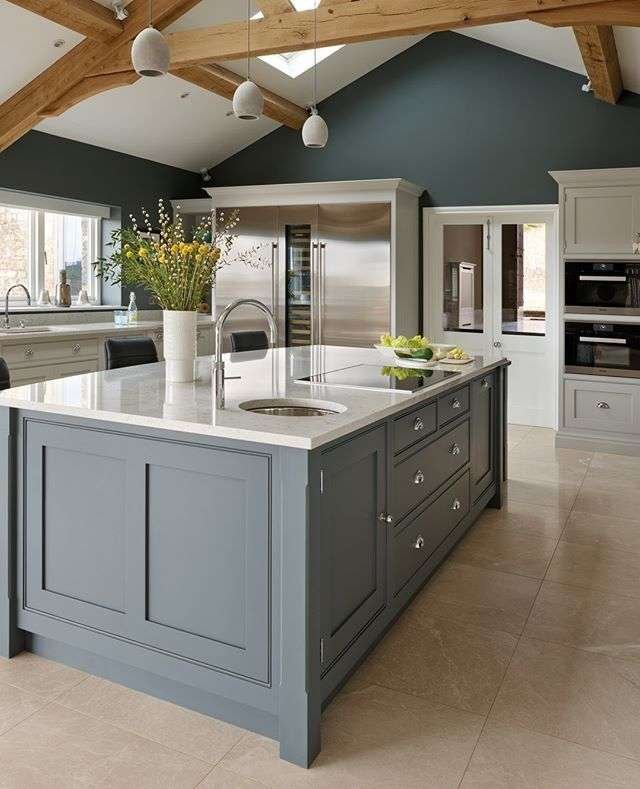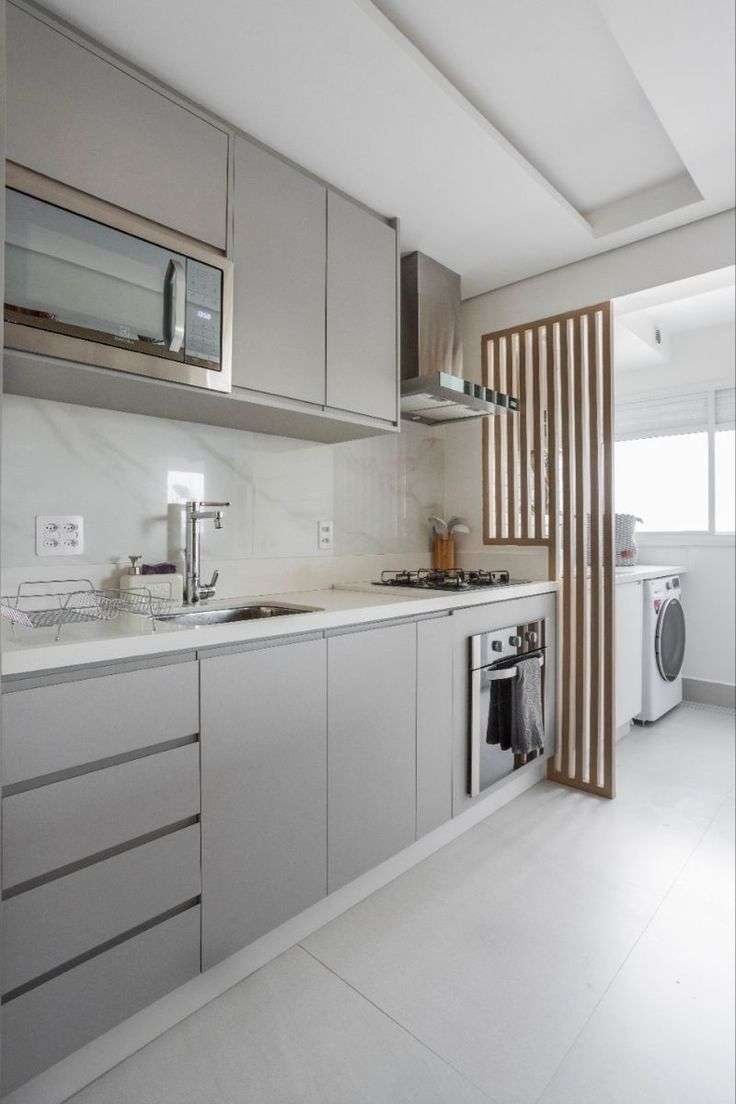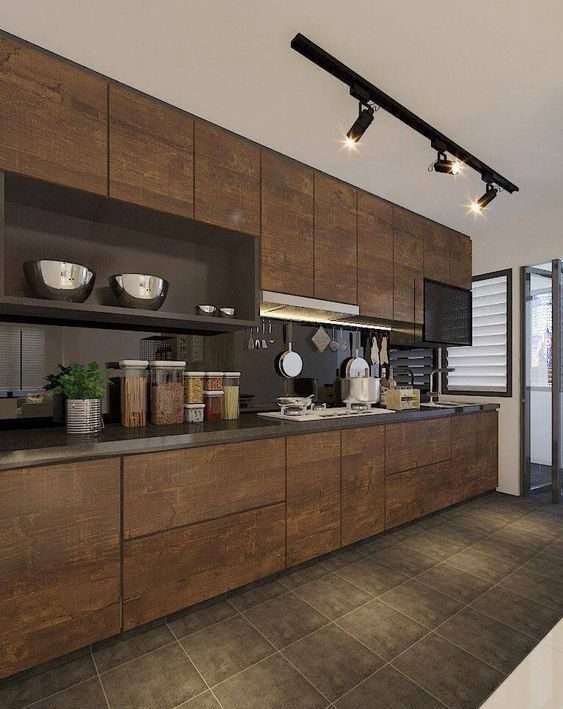The Foundation: Understanding the Significance
Guide To Kitchen Remodeling: Remodeling a kitchen isn’t just about updating a space; it’s about enhancing the heart of your home. This area, where meals are prepared and memories are made, deserves thoughtful consideration and planning. According to a recent Houzz survey, kitchen remodels can significantly boost home satisfaction, with 33% of respondents reporting a healthier lifestyle post-renovation.
Planning: The Recipe for Remodeling
1. Set Clear Goals
Define what you want to achieve: More space? Better functionality? Aesthetic appeal?
Consider how your kitchen integrates with the rest of your home.
2. Budgeting: Balancing Cost and Quality
On average, homeowners spend about 10-15% of their home’s value on a kitchen remodel.
Allocate funds wisely, prioritizing elements like quality cabinetry and energy-efficient appliances.
3. Design Considerations
Layout: Opt for a user-friendly arrangement like the classic ‘work triangle’.
Materials and Finishes: Choose durable, timeless materials that complement your home’s style.
Execution: Bringing Your Vision to Life
1. Choosing the Right Team
Select experienced contractors with a portfolio of successful kitchen remodels.
Check references and reviews to ensure reliability and skill.
2. Project Management
Regular communication with your team is key to keeping the project on track.
Be prepared for unexpected challenges and budget extra time for unforeseen delays.
Case Study: A Real-World Success Story
In a remarkable case, a family from Portland transformed their cramped, outdated kitchen into a spacious, modern hub. By knocking down a non-load-bearing wall, they created an open-plan design that increased both functionality and visual appeal. This strategic move, accompanied by the installation of energy-efficient appliances and LED lighting, not only enhanced their daily life but also added significant value to their home.
The Bigger Picture: Impact on Lifestyle and Home Value
A well-executed kitchen remodel can have far-reaching effects:
Lifestyle Enhancement: A functional and aesthetically pleasing kitchen can change the dynamics of family interactions and entertainment.
Increased Home Value: The National Association of Realtors reports that homeowners can recoup as much as 59% of the cost of a kitchen remodel in home value.
In conclusion, this “guide to kitchen remodeling” isn’t just about renovation; it’s about creating a space that reflects your lifestyle and enhances your daily life. By combining strategic planning, thoughtful design, and skilled execution, your kitchen remodel can be a resounding success, bringing both personal satisfaction and long-term value to your home.
Navigating Challenges: Overcoming Common Obstacles
Even the best-laid plans can encounter hurdles. Here’s how to navigate some common kitchen remodeling challenges:
1. Staying on Budget
Unexpected expenses can arise. Set aside at least 10-20% of your budget for contingencies.
Be flexible with material choices – alternatives can sometimes offer similar quality at a lower cost.
2. Dealing with Delays
Supply chain issues can delay the delivery of materials. Choose locally sourced items when possible.
Have a temporary kitchen setup to minimize disruption to your daily routine.
Sustainability: A Modern Essential
Incorporating sustainable practices into your kitchen remodel isn’t just good for the planet; it often means long-term savings. Consider:
Energy-Efficient Appliances: These can reduce utility bills and are often favored in real estate markets.
Sustainable Materials: Bamboo flooring, recycled glass countertops, and LED lighting are eco-friendly choices that don’t compromise on style.
Technology Integration: The Smart Kitchen
The modern kitchen is more than just a place to cook. Integrating smart technology can enhance efficiency and enjoyment:
Smart Appliances: Refrigerators that track expiry dates, ovens you can control with your smartphone, and more.
Voice-Activated Devices: For hands-free control, consider installing devices like Amazon Echo or Google Home.
Personalization: Making It Yours
Your kitchen should reflect your personal style and fit your lifestyle. Personal touches might include:
Custom Storage Solutions: Tailored drawers and cabinets that cater to your specific needs.
Unique Design Elements: A chalkboard wall for family messages, a built-in wine rack, or bespoke lighting fixtures.
The Future of Kitchen Design: Trends to Watch
Keeping an eye on emerging trends can inspire your kitchen remodel:
Multi-Functional Spaces: Kitchens that double as workspaces or dining areas.
Bold Color Schemes: Moving away from traditional whites and neutrals to more vibrant hues.
Conclusion and Next Steps
Embarking on a kitchen remodel is a journey of transformation. It’s about creating a space that’s both functional and a reflection of your personal style. By staying informed, making strategic decisions, and infusing your kitchen with elements that speak to your lifestyle, you can ensure a successful remodel that stands the test of time.
The Role of Detailing: Finishing Touches that Matter
Attention to detail can elevate your kitchen remodel from good to great. Consider these finishing touches:
1. Hardware and Fixtures
Cabinet knobs, drawer pulls, and faucets serve as the jewelry of your kitchen. Choose styles that complement the overall aesthetic.
Mixing metals, such as brass with chrome, can add a contemporary edge.
2. Lighting Design
Layer your lighting: Combine ambient, task, and accent lighting for functionality and ambiance.
Pendant lights over the island or under-cabinet lights can enhance both the usability and mood of the space.
Adaptability: Designing with Future Needs in Mind
A forward-thinking approach ensures your kitchen remains functional and stylish for years to come:
1. Flexible Layouts
Consider an adjustable island or modular units that can be rearranged as needs change.
Incorporate universal design principles to make the space accessible for all ages and abilities.
2. Evolving Technologies
Choose appliances and systems that can be easily updated or integrated with future technological advancements.
Engaging with the Community: Learning from Others
Join online forums, attend local home shows, or participate in kitchen tours to gain insights and inspiration from other homeowners’ remodeling experiences.
The Emotional Aspect: Kitchen as a Memory Maker
Your kitchen is more than a cooking area; it’s a memory-making space. Personalize it with elements that hold sentimental value, like a family heirloom on display or a gallery wall of cherished photos.
Legal and Safety Considerations
1. Permits and Regulations
Ensure your remodel complies with local building codes and regulations. Obtain necessary permits to avoid future legal complications.
If you live in a condo or a historic district, additional approvals might be required.
2. Safety Measures
Install smoke detectors and proper ventilation systems.
Choose materials with non-toxic finishes, especially if you have young children or pets.
Measuring Success: Evaluating the Outcome
Upon completion, evaluate your remodel based on:
Functionality: Does the space meet your cooking and lifestyle needs?
Aesthetics: Is the final look in line with your vision?
Return on Investment: Consider both the monetary value added to your home and the intangible value of enhanced daily living.
Final Thoughts: Your Journey to a Dream Kitchen
Guide to kitchen remodeling is a significant endeavor, but with careful planning, informed decisions, and a touch of creativity, it can be an incredibly rewarding process. Your newly transformed kitchen will not only be a centerpiece of your home but a testament to your vision and efforts.
Integrating Dining and Living Spaces: The Open Concept Kitchen
As modern homes evolve, the kitchen’s role as a standalone space is changing. Consider the benefits of an open concept:
1. Enhanced Social Interaction
An open layout facilitates conversation and interaction between the kitchen and living areas.
It’s ideal for families and those who enjoy entertaining.
2. Improved Flow and Space Utilization
Removing walls can create a sense of spaciousness and improve the flow of movement.
It allows for multifunctional areas, like combined dining and kitchen spaces.
Material Choices: Balancing Aesthetics and Functionality
Your choice of materials can significantly impact both the look and longevity of your kitchen:
1. Countertops
Options like quartz, granite, and marble offer durability and beauty but vary in maintenance and cost.
Consider eco-friendly materials like recycled glass for a unique look.
2. Flooring
Hardwood floors create warmth and continuity with other living spaces.
Porcelain tiles offer durability and come in a variety of designs.
The Power of Color: Setting the Right Tone
Color can dramatically affect the mood and style of your kitchen:
1. Warm vs. Cool Tones
Warm tones create a welcoming atmosphere, while cool tones can give a sleek, modern look.
Consider the natural light your kitchen receives when choosing your color palette.
2. Accent Colors
Use accent colors in areas like the backsplash or on an island to add depth and interest.
Maintenance and Upkeep: Ensuring Longevity
1. Regular Cleaning
Choose materials that are easy to clean and maintain.
Implement a regular cleaning schedule to keep your kitchen looking its best.
2. Preventive Maintenance
Regularly check and maintain appliances and fixtures to prevent breakdowns.
The Impact of Lighting: More Than Just Illumination
Proper lighting is crucial in a kitchen, not just for aesthetics but for safety and functionality:
1. Task Lighting
Ensure that work areas like countertops and stoves are well-lit.
LED strips under cabinets are a popular and efficient choice.
2. Mood Lighting
Dimmer switches can create a relaxing ambiance for dining or entertaining.
Bringing the Outdoors In: Natural Elements
Incorporate natural elements to create a harmonious balance:
1. Indoor Plants
Herbs or small plants add freshness and can be functional for cooking.
Larger plants can create focal points and improve air quality.
2. Natural Light
Maximize natural light with larger windows or skylights.
Consider the direction of the sun and how it affects the room throughout the day.
Reflecting on the Process: Personal Growth and Satisfaction
Finally, recognize the personal growth that comes with undertaking such a project. The challenges and successes of a kitchen remodel can be a rewarding experience, offering a sense of accomplishment and the joy of creating a space that truly reflects your personality and needs.
Embracing Technology: The High-Tech Kitchen
In the digital age, integrating technology into your kitchen can vastly improve its functionality and convenience:
1. Smart Kitchen Gadgets
From programmable coffee makers to refrigerators that can order groceries, smart gadgets are redefining kitchen convenience.
Consider Wi-Fi-enabled appliances that allow remote control and monitoring.
2. Innovative Storage Solutions
Modern cabinetry can include built-in charging stations and tablet holders, keeping technology at your fingertips without cluttering the countertop.
The Art of Zoning: Efficient Kitchen Layout
Effective zoning is crucial for a functional kitchen. This section of our “guide to kitchen remodeling” emphasizes the importance of designated areas:
1. Cooking Zone
Position your stove, oven, and microwave in one area for efficient meal preparation.
Include utensil storage and spice racks for easy access while cooking.
2. Cleaning Zone
The sink, dishwasher, and garbage disposal should be grouped together to streamline the cleanup process.
Consider pull-out bins for recycling and compost to promote eco-friendly habits.
The Social Kitchen: Designing for Interaction
In many homes, the kitchen is a social hub. Design your space to encourage interaction:
1. Seating Areas
Incorporate a breakfast bar or island with seating to create a casual dining and socializing area.
A small sofa or comfortable chairs can make the kitchen a welcoming space for guests and family.
2. Interactive Cooking Spaces
Consider a layout that allows guests to interact with the cooking process, like a central island with a cooktop.
Customization: Tailoring to Your Culinary Needs
Every home chef has unique needs. Customize your kitchen to suit your cooking style:
1. Specialized Appliances
If you love baking, consider a double oven or a dedicated baking station.
Wine enthusiasts might appreciate a built-in wine cooler or a custom rack.
2. Ergonomic Design
Adjust counter heights and choose hardware that is comfortable for frequent use.
Beyond the Basics: Advanced Kitchen Features
For those looking to go the extra mile in their kitchen remodel, consider these advanced features:
1. Built-In Coffee Systems
A built-in espresso machine can save counter space and add a luxurious touch.
2. State-of-the-Art Ventilation
Invest in a high-quality range hood or downdraft system for effective smoke and odor removal.
Conclusion: Crafting Your Dream Kitchen
This comprehensive “guide to kitchen remodeling” has covered everything from basic planning to advanced features. Remember, a successful remodel is not just about following trends; it’s about creating a space that resonates with your lifestyle and preferences. With careful planning, a dash of creativity, and a focus on functionality, your dream kitchen is well within reach.
Celebrating Diversity: A Kitchen for Everyone
In the final stages of our “guide to kitchen remodeling,” it’s important to acknowledge that every family has unique needs. Here’s how to ensure your kitchen is welcoming and accessible to all:
1. Universal Design
Incorporate features like varying counter heights and pull-out shelves to accommodate different ages and abilities.
Easy-to-grip handles and touchless faucets can make the kitchen more user-friendly.
2. Cultural Considerations
If your cooking style is influenced by cultural traditions, integrate specialized appliances or storage solutions that cater to these needs.
The Green Kitchen: Eco-Friendly Practices
Sustainability is more than a trend; it’s a responsible approach to living:
1. Energy Conservation
Opt for Energy Star-rated appliances and LED lighting to reduce your carbon footprint.
Consider solar panels or green roofing options for an eco-conscious energy boost.
2. Sustainable Materials
Choose cabinetry and countertops made from recycled or sustainably sourced materials.
Use low-VOC paints and finishes to maintain indoor air quality.
Reflections: The Journey and Its Rewards
As you near the completion of your kitchen remodeling project, take a moment to reflect on the journey:
The Challenges: Overcoming obstacles like budget constraints or design dilemmas can be empowering.
The Achievements: From choosing the perfect backsplash to mastering the layout, each decision has shaped your kitchen’s transformation.
Conclusion: Your Guide to Kitchen Remodeling Realized
Embarking on a kitchen remodel is a significant undertaking, but the rewards are substantial. This guide has provided insights into planning, design, technology, sustainability, and personalization – all key ingredients in the recipe for a successful kitchen transformation.
Your new kitchen is not just a renovation; it’s a reflection of your lifestyle, tastes, and priorities. It’s a space where functionality meets creativity, where daily routines are infused with ease and enjoyment. Whether you’re whipping up a quick breakfast or hosting a dinner party, your remodeled kitchen is a testament to your vision and effort.
Remember, the ultimate success of your kitchen remodel isn’t measured just by its aesthetic appeal or the increase in property value, but also by the joy and functionality it brings to your daily life. With this comprehensive guide to kitchen remodeling, you’re now equipped to create a space that is not only beautiful and efficient but also uniquely yours.




